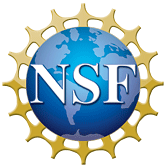86-GHz Blazar Imaging on ARISE-VLBA Baselines VLBA Scientific Memo No. 19
Next: Introduction
86-GHz Blazar Imaging on ARISE-VLBA
Baselines
VLBA Scientific Memo No. 19
Jim Ulvestad
January 29, 1999
Abstract:
The detection threshold between ARISE and a
single VLBA telescope is expected to be ![]() mJy at 86 GHz, given nominal mission parameters of a 25-meter
orbiting telescope with 8% aperture efficiency and a data rate of
8 Gbit sec
mJy at 86 GHz, given nominal mission parameters of a 25-meter
orbiting telescope with 8% aperture efficiency and a data rate of
8 Gbit sec![]() . This detection
threshold corresponds to the inverse Compton limit of
. This detection
threshold corresponds to the inverse Compton limit of ![]() K for a baseline length of 50,000 km, and at
least 200 sources should be detectable on such a baseline. The
number of detectable sources will drop somewhat below 100 for a
data rate of 2 Gbit sec
K for a baseline length of 50,000 km, and at
least 200 sources should be detectable on such a baseline. The
number of detectable sources will drop somewhat below 100 for a
data rate of 2 Gbit sec![]() , or for a typical
brightness temperature of
, or for a typical
brightness temperature of ![]() K. For a
baseline length of 100,000 km, the observed brightness
temperature would need to be
K. For a
baseline length of 100,000 km, the observed brightness
temperature would need to be ![]() K for a
detection using a VLBA antenna; very few sources would then be
detected on an ARISE-VLBA baseline unless the ARISE aperture
efficiency is near 30%. Assuming the successful launch of GLAST
in 2005, the nominal ARISE mission, working with the VLBA, will
be able to image at least 60 gamma-ray blazars with resolution
better than 100 light days, or
K for a
detection using a VLBA antenna; very few sources would then be
detected on an ARISE-VLBA baseline unless the ARISE aperture
efficiency is near 30%. Assuming the successful launch of GLAST
in 2005, the nominal ARISE mission, working with the VLBA, will
be able to image at least 60 gamma-ray blazars with resolution
better than 100 light days, or ![]() blazars if
a large ground telescope is used to anchor the array.
blazars if
a large ground telescope is used to anchor the array.
- Introduction
- Nominal ARISE sensitivity
- Source Counts
- Detectable Sources for ARISE
- Brightness-Temperature Threshold
- Linear Resolution
- References
- About this document ...




Connect with NRAO